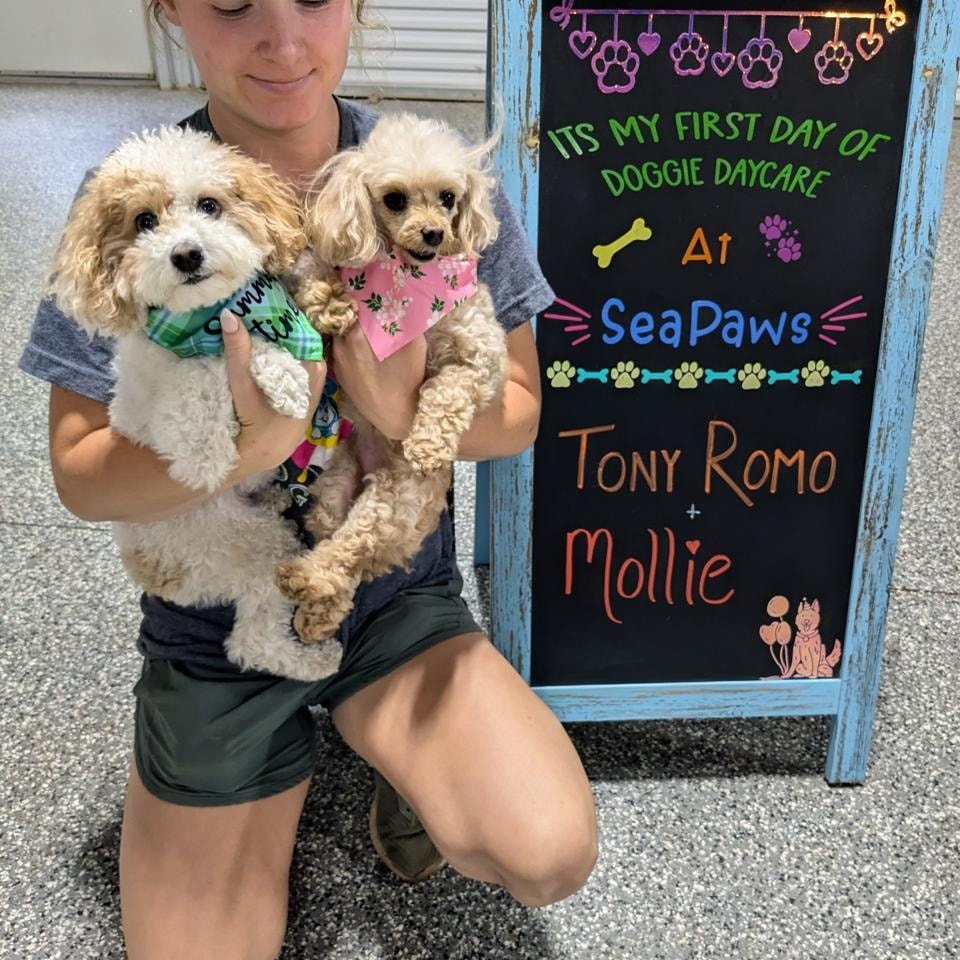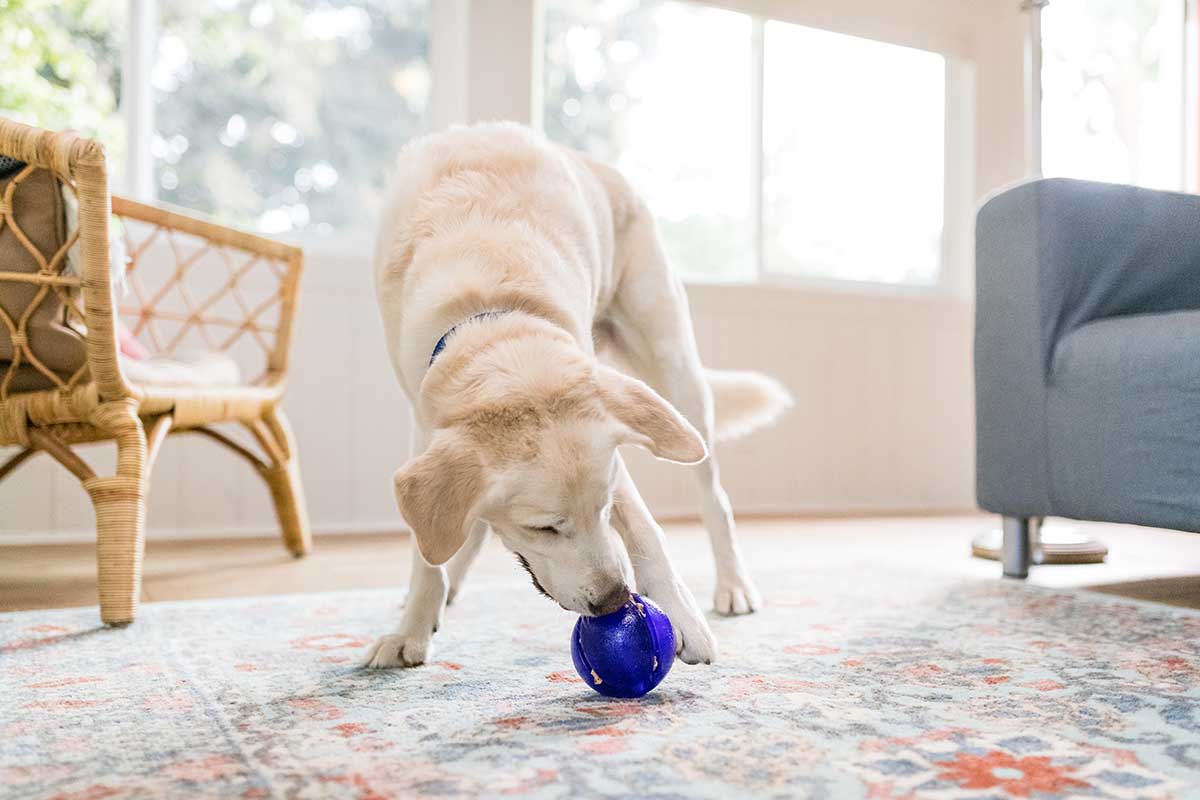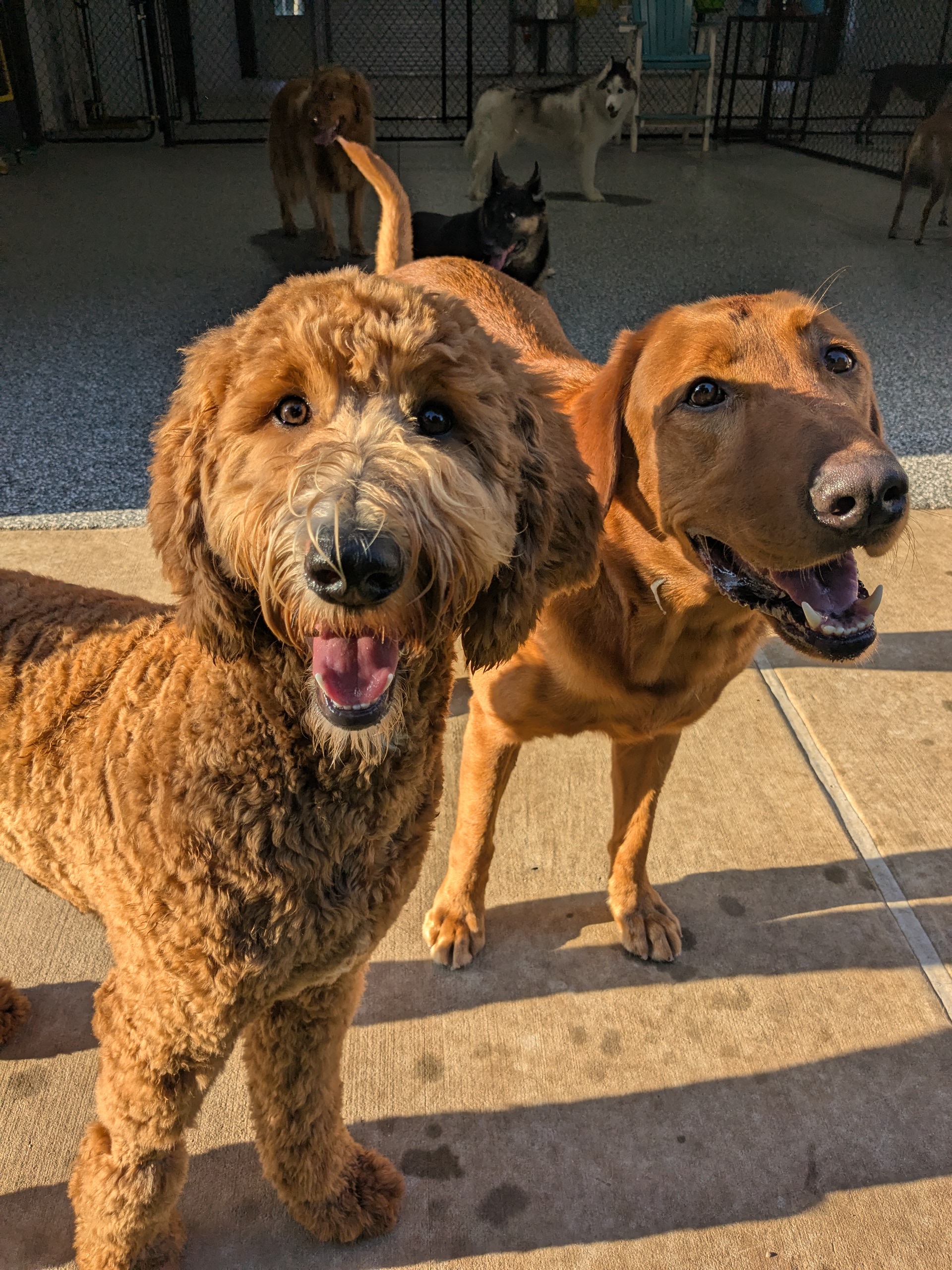Dogs may not use words the way humans do, but that does not mean they do not have plenty to say. In fact, dogs are incredible communicators when we learn how to interpret their signals. One of the clearest ways they express themselves is through their tails. At first glance, it may seem like a wagging tail always signals happiness, but the truth is far more fascinating. Just like a smile or tone of voice in people, a dog’s tail carries layers of meaning that can show excitement, fear, uncertainty, or even aggression. At Seapaws, we believe that truly understanding these signals is key to creating a safe, nurturing, and fun environment for every pup who comes through our doors.
More Than Just a Wag
Many people think of a wagging tail as a universal sign of joy. While it is true that wagging can indicate playfulness or friendliness, not all wags are created equal. The speed, position, and direction of a wag all work together to paint a picture of what a dog is feeling in the moment. For example, a fast, loose wag often signals excitement or happiness, while a slow, stiff wag may be a warning that a dog feels uncomfortable. Recognizing the difference is vital to understanding what our furry friends are trying to tell us.
Tail Position The Silent Signal
One of the most important things to observe is where a dog holds their tail. A tail held high often shows confidence or alertness, while a tail tucked tightly between the legs can indicate fear, submission, or stress. A tail that hovers straight out might show a dog is on guard, while a neutral, relaxed tail position is usually a sign of calm contentment. By reading these positions, we can get a clear sense of how a dog is experiencing their surroundings.
At Seapaws, our staff is trained to look for these subtle cues. When a dog arrives, we pay attention to how their tail is held, which helps us gauge whether they are relaxed and ready to play, or if they might need a little extra reassurance before joining a group.
Speed and Style What the Wag Tells Us
Not only does tail position matter, but so does the speed and style of the wag. A slow wag can indicate uncertainty, while a fast wag may mean a dog is excited or highly stimulated. Some dogs wag in wide, sweeping motions that often signal friendliness, while others wag stiffly, which can be a red flag. A circular helicopter wag is often the ultimate sign of happiness, reserved for greeting beloved people or canine friends.
Understanding these nuances allows us to match dogs with compatible playmates. For example, if one dog’s tail shows nervousness, we will not place them with an overly energetic group right away. Instead, we ease them into the environment, helping them gain confidence at their own pace.
Not All Wags Are Happy
One of the most important lessons in dog communication is that wagging does not always mean a dog is happy. Sometimes a wag can signal agitation, dominance, or even aggression. If a dog’s tail is high and stiff, wagging in short, tight motions, it is often a sign of tension rather than friendliness. Recognizing this difference is crucial for preventing misunderstandings between dogs and keeping group play safe.
Our staff at Seapaws is skilled at spotting these warning signs early. If we see a dog showing signs of discomfort through their tail language, we redirect the situation to keep the environment positive for everyone. This proactive approach helps ensure that all dogs can play, socialize, and relax without unnecessary stress.
The Whole Picture Matters
While the tail provides a wealth of information, it is important to remember that dogs communicate with their entire bodies. Their ears, eyes, posture, and even the way they move all work together with tail signals to create a complete message. For instance, a wagging tail paired with relaxed ears and a wiggling body is very different from a wagging tail combined with stiff posture and hard staring.
At Seapaws, our team is trained to read the whole picture. We know that no single signal tells the entire story, and by paying attention to all of a dog’s body language, we are able to provide the best care, understanding, and safety for each pup.
Helping Dogs Feel Understood
When dogs feel understood, they feel safe. Just like humans, dogs thrive in environments where their needs and emotions are respected. By paying close attention to tail language and body cues, we help dogs feel seen and supported, which reduces stress and builds confidence. This not only makes playtime more enjoyable but also strengthens the bond between dogs and their caregivers.
At Seapaws, we go beyond simply supervising. We work to truly understand each dog’s personality and emotional state. By interpreting their unique language, we help foster a community where dogs can grow, socialize, and play with confidence.
Why Tail Language Matters for You
As a pet parent, learning to read your dog’s tail signals can also improve your bond at home. Noticing when your pup’s tail signals stress can help you remove them from overwhelming situations. Recognizing when their wag shows joy allows you to celebrate their happiest moments with them. By understanding their language, you can provide better care, support, and companionship every day.
A Place Where Dogs Are Heard
At Seapaws, we believe that every dog has a voice, even if it does not come in the form of words. Their tails, ears, and body language all tell us what they need, and we listen closely. From the moment they walk in, we make sure they feel secure, understood, and loved. Our dedication to reading their signals helps us create the safest and happiest environment possible.
So, the next time you see your dog’s tail wagging, take a closer look. Is it fast or slow? High or low? Loose or stiff? Behind every wag, there is a story, and at Seapaws, we are here to make sure every story is heard.







